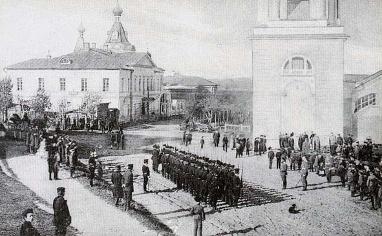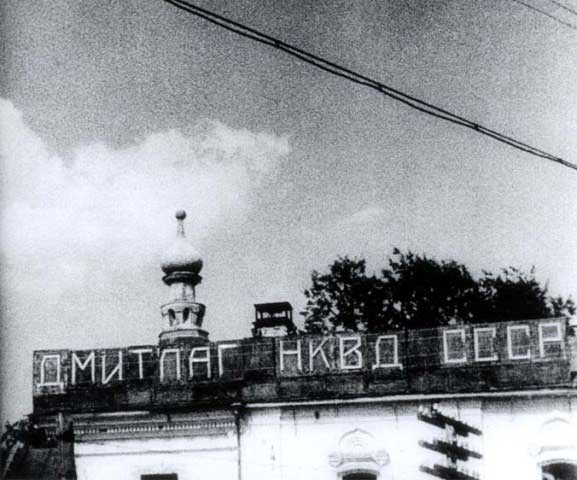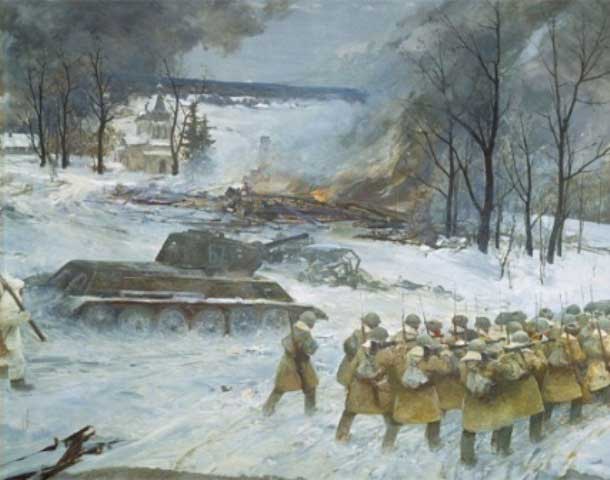History of Dmitrov
12th Century
Foundation
![]()
Dmitrov was founded in 1154 by Yuri Dolgoruky in swamp lands on the River Yakhroma and was named in honour of St Demetrius of Saloniki (Thessaloniki). In the same year Yuri Dolgoruky's son Vsevolod (later to be known as Vsevolod the Big Nest) was born in the new city. Dmitrov quickly became a fortified location for the protection of Vladimir-Suzdal lands and was an important stop on the river trade routes. The city was later burned to the ground in 1180 during the war between Prince Svyatoslav Vsevolodovich of Chernigov and Prince Vsevolod the Big Nest of Vladimir.
13th Century
Galich-Dmitrov Principality
By 1214 Dmitrov had recovered in strength and was able to defend itself from an attack by Prince Vladimir Vsevolodovich. In 1238 the city was sacked during the Mongol-Tatar Invasion of Rus. In around 1247 the city became part of the Galich-Dmitrov Principality. It is not known exactly when the Galich-Dmitrov Principality split, but in 1334 a separate Prince of Dmitrov is mentioned in chronicles.
14th Century
Dmitrov Congress of Russian Princes
In 1301 a congress was held between Russian princes in an attempt to stop the continuous internecine wars. Grand Prince Andrey Aleksandrovich of Vladimir, Prince Mikhail Yaroslavich of Tver, Prince Ivan Dmitrievich of Pereslavl-Zalessky and Prince Daniil Aleksandrovich of Moscow attended the meeting, but it failed to have any lasting effect on bringing peace to Rus lands.
Appendage of the Moscow Principality
Sometime between 1360 and 1368, the Dmitrov Principality was incorporated into the Moscow Principality and Dmitrov was given as an appendage of the sons of the grand princes of Moscow. In 1372 the surrounding areas were attacked by Grand Prince Mikhail Aleksandrovich of Tver in his war with Grand Prince Dmitri Donskoy of Moscow. From 1372 to 1389 Dmitrov was ruled by Prince Vladimir Andreevich the Brave of Serpukhov, until Dmitri Donskoy took back the city from him. After Dmitri's death in 1389 the city was given to Dmitri's son Pyotr Dmitrievich.
15th Century
In 1408 Dmitrov was sacked by the forces of Emir Edigu from the Golden Horde. Prince Pyotr Dmitirevich of Dmitrov died in 1428 without issue and the city was again incorporated into Moscow, until it was given by Grand Prince Vasili II of Moscow to Prince Vasili Yaroslavich of Serpukhov. However it was later exchanged in 1454 for Zvenigorod and once again incorporated into Moscow until Vasili II of Moscow granted it for a second time, this time to his son Yuri Vasilievich.
16th Century
Prince Yuri Ivanovich of Dmitrov
In 1505 Yuri Ivanovich, brother of Grand Prince Vasili III, was granted Dmitrov as an appendage. During his reign, Prince Yuri Ivanovich ordered the construction of the city's Dormition Cathedral which was built between 1509 and 1533. Grand Prince Vasili III died in 1533 and in 1534 Elena Glinskaya, who was acting as regent for her son (the new Grand Prince Ivan IV, later known as Ivan the Terrible), had Yuri arrested and imprisoned as she considered him a threat to her son's throne. Prince Yuri died in prison in 1536.
Oprichnina
After the death of Prince Yuri Ivanovich of Dmitrov, Dmitrov passed to his brother Prince Andrey Ivanovich of Staritsa and then in 1537 to his son Prince Vladimir Andreevich of Staritsa. When Prince Vladimir of Staritsa was executed in 1569, Dmitrov became part of the Oprichnina, a separate territory within Russia outside the normal laws of the country and ruled by Ivan the Terrible's own secret police known as Oprichniki. Like the rest of the country during the period, Dmitrov suffered heavily during the repression and its trade substantially declined.
17th Century
Times of Troubles

In 1609 troops led by Mikhail Skopin-Shuisky, managed to defeat the forces of the Second False Dmitri just outside of Dmitrov. The Times of Troubles made a more significant impact on the city in 1610 when the Polish-Lithuanian army of Yan Sapega captured the city as the army was retreating from Sergiev Posad after its siege of the monastery there had been lifted by the Russians. The Polish-Lithuanian Interventionists did not remain long in Dmitrov, but during their occupation they destroyed Dmitrov's wooden fortress. The fortress was never rebuilt, but its earthen mound remains today. The destructive years of the Oprichnina and then the Times of Troubles resulted in the decline of Dmitrov
18th Century
In 1781 Dmitrov became the centre of the Dmitrov District and was granted a coat of arms. By this time it was a successful trading city. The city was also granted a coat of arms which was inspired by the Dmitrov Congress of Russian Princes and features four crowns representing the four princes who attended the congress.
19th Century

In 1812 Napoleon's Grand Armeé briefly occupied Dmitrov until it abandoned the city without a fight having heard that Russian troops were approaching and after not being able to pacify the local resistance. The city was hardly damaged during this occupation. Later in the century Dmitrov was overlooked in favour of its neighbours, when the Moscow-St Petersburg railway was built through Klin and the Yaroslav railway through Sergiev Posad. This led to Dmitrov relying only on its decreasing river trade and caused a decline in its fortunes as a trading city.
20th Century
Dmitlag and the Moscow Canal

In 1932 Dmitrovlag, later known as Dmitlag, was established as part of the Gulag system in Dmitrov. The camp's prisoners were used for the construction of the Moscow Canal to link the River Moskva with the Volga. The camp's administration was located at the recently closed Borisoglebsky Monastery. The organisation Memorial states that at its height almost 200,000 prisoners were held at the camp. In 1937 a mass execution of Dmitlag camp prisoners took place at the Butovo Firing-Range. The camp was finally closed in 1938.
Second World War

On the 26-27 August 1941 Dmitrov was attacked by the Nazis who managed to cross the canal and consolidate on the Peremilovskaya Heights to the south of the city. However the Nazis were forced from here on the 29 November 1941 and a counter attack by the Red Army was subsequently launched resulting in the liberation of the whole Dmitrov District in December 1941. For the heroic actions of the city's defenders, Dmitrov was awarded the status of City of Military Glory.


 History
History